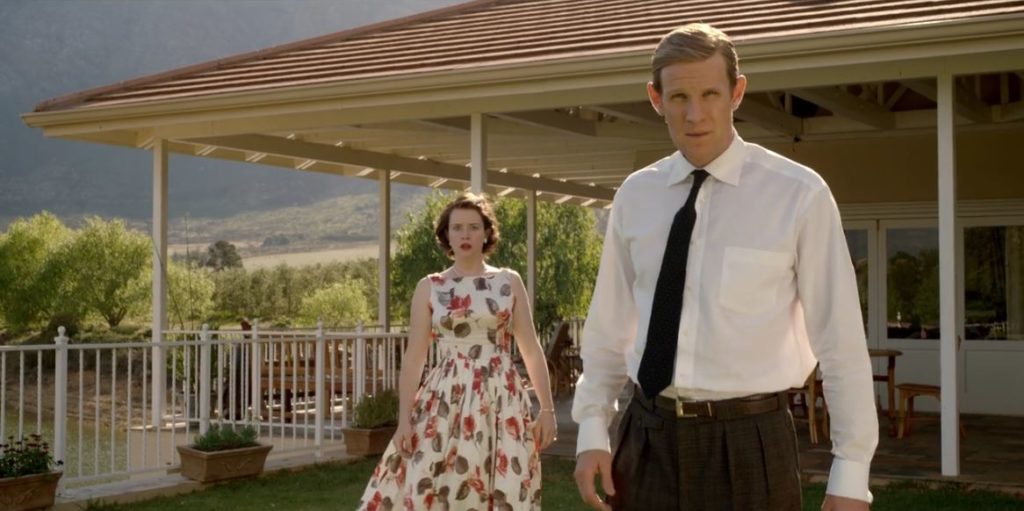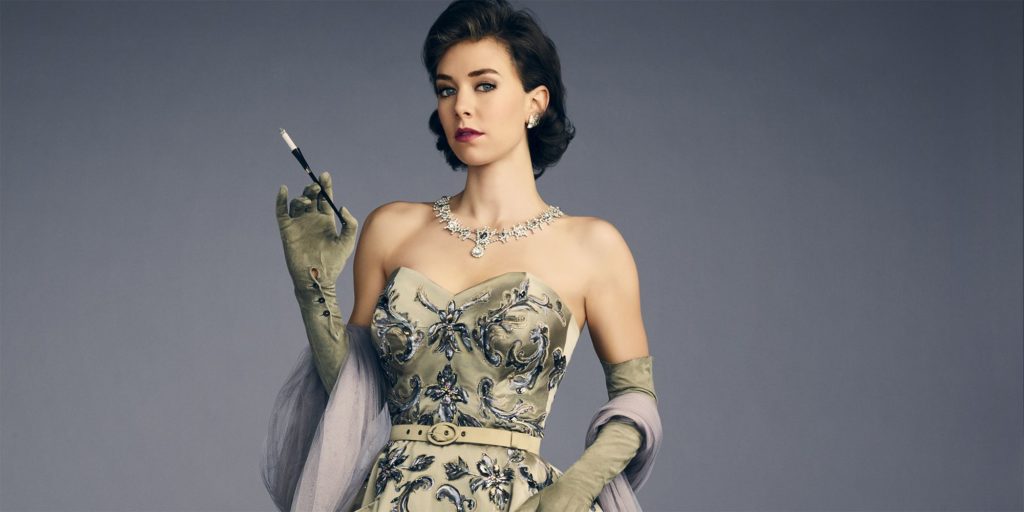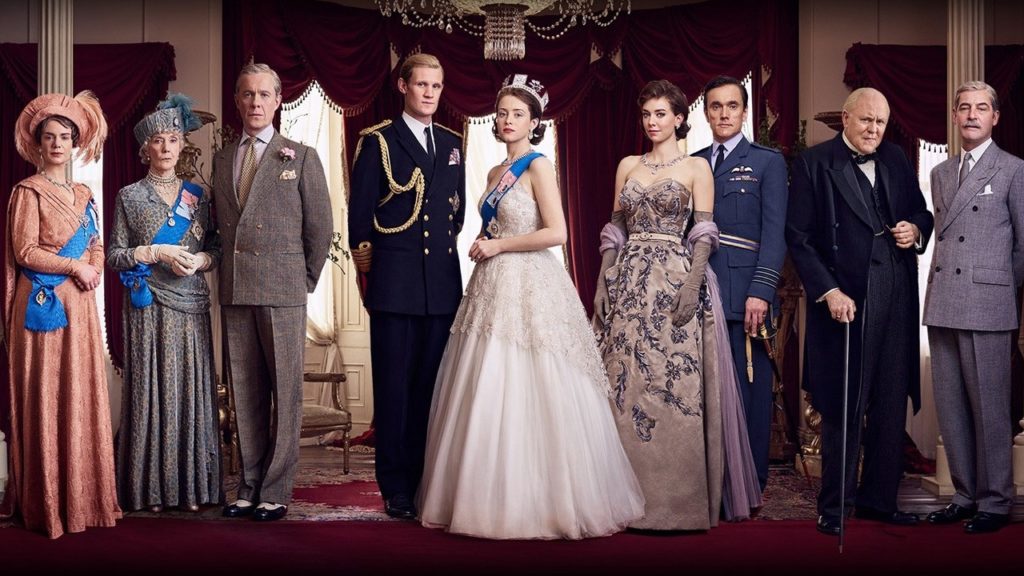As well as being an extremely polished drama about the lives, loves and frustrations of the royal family, one of the recurring themes throughout The Crown is the relationship between the monarchy, the media and the people.
Whether it’s Claire Foy, Olivia Coleman or Her Majesty in real life, there are many, many lessons about PR and marketing which can be learned from Britain’s longest reigning monarch.
In this blog, we’ll look back at season one of The Crown on Netflix and highlight some of the best examples of PR and reputation management in action.
“Who wants transparency when you can have magic?”
One of the landmark early episodes of The Crown, Smoke & Mirrors sets the groundwork for the royals’ ongoing battle between tradition and modernity.
In the run up to Elizabeth’s coronation, Philip is bristling at being consigned to the role of consort and so the then-Princess decides to cheer him up by making him responsible for the coronation committee.
Initially underwhelmed, Philip is quickly excited when he realises the potential for what the coronation could be: A chance to redefine the monarchy as a modern, democratically minded and egalitarian institution by doing away with some of the stuffy traditions of the past.
In many respects, he fails to achieve this, but he is successful in one crucial aspect: He convinces Elizabeth and the committee to televise the all-important coronation ceremony.
Elizabeth is not so enthusiastic about the idea of people watching her be crowned while they sit at home “with their dinners on their laps”, but in the end, she agrees.
While in hindsight, we can see this as a major step closer to the monarchy we know now, at the time this was something of a dilemma – one which is demonstrated in the contrast between how the episode treats Elizabeth and how it treats her uncle, the abdicated king, David Windsor / Prince Edward.
David spends much of the episode smirking and sneering at his television set at home. Stripped away of the magic and majesty of the crown, he is portrayed as a sad and lonely man; a shadow of what we think a monarch should be.
A comment from David underlines the key question which is raised by televising the coronation; “Who wants transparency when you can have magic?”
The fear among many involved in the coronation is that when you pull away the veil and see the monarch for who they are, you’re left with a real, surprisingly ordinary person.
This should also be a consideration for any organisation today; a rule of thumb in PR is that transparency is the best policy. But how much of the inner workings do you let people see? Is it really wise to reveal the warts-and-all reality, or do you hold back and maintain the smoke and mirrors of corporate branding?
In the end, Elizabeth pulls back the curtain, having the whole ceremony broadcast on live TV. Except, that is, for the most important, most spiritual and most magical moment – when she is anointed with the holy oil.
By letting the whole world inside Westminster Abbey through their television sets, she breaks down barriers and enables her subjects to share an intimate and important moment with her… but they aren’t allowed to see everything.
Her reign begins with an enormous statement of unity and inclusivity. Watching the original footage from the day, it’s still impossible not to try and put yourself in her shoes and wonder what’s going through her mind: You empathise with her and you see her as a real, vulnerable young woman who’s about to become something special. It’s a public relations masterpiece.
Crucially, although we see so much of the coronation, the curtain only goes back so far. A little of the magic and mystery is preserved and left unseen. By not allowing this to be filmed, Queen Elizabeth can be open and mysterious, striking the perfect balance between ordinary and extraordinary.
“A dancing bear”
While pomp prestige is important, it can be hard work keeping up appearances.
In the penultimate episode of season one, Pride & Joy, we Elizabeth and Philip feeling the strain during a 23 week tour of the Commonwealth.
In an effort to further the status of the crown around the world, Elizabeth and Philip are tirelessly travelling between 13 countries from Asia to the West Indies, covering 40,000 miles by land, air and sea.
Well, not quite tirelessly: It’s exhausting and the two are anxious about every bit of media coverage.
Despite his eagerness for the coronation to have been televised, Philip is frustrated. He chafes under uniforms which he describes as “costume”, he tries to skip events and he complains about waving to the crowds in his sleep.
Even Elizabeth’s patience is being tested; she even goes as far as to have a muscle relaxant injected into her jaw so she can carry on smiling at a dinner party.
This is one of the more frustrating lessons about PR and marketing; it can be bloody hard work to keep up appearances and please everyone and you can sometimes feel a little like “a dancing bear”, as Phillip bitterly describes himself.
Thankfully, as the episode also demonstrates, there are easier ways of building a reputation, which we’ll come onto in a moment.
The tennis racket row
First comes one of the most surprising moments of the episode, which stands out because you simply cannot imagine it happening today.
At the peak of their frustration, Elizabeth is inadvertently filmed by Australian journalists angrily throwing a tennis racket at Philip during a heated argument.

Realising the damage this could cause undo everything they’ve tried to achieve, Elizabeth takes the bold step in confronting the journalist herself and begging him not to air the footage. Obligingly, he opens the film canister and destroys it in front of her.
Amazingly, this is reported to have actually happened, but, regrettably, it would almost certainly never happen today. While we seem to have now passed the paparazzi peak of the early 2000s, there’s still too much money being offered by tabloid papers around the world for photographers to be quite so decent as this Australian film crew.
One photographer was even paid “mid six figures” just for photos of Kristen Stewart hugging a married director a few years ago.
While there might be some legal expectation of privacy in this situation which might hold back some conscientious editors in the UK, the marital lives of celebrities are of global interest and not every country is so protective of people’s privacy – and it only takes one person to publish it online before it explodes.
Chances are that if a young Elizabeth went out and begged a journalist to destroy that footage today, some creep-shooting scumbag in the bushes would publish that footage too and humiliate her further.
Far better to anticipate that a row like this might happen in advance, take steps to make sure it doesn’t happen in front of the cameras and – just in case – have a plan for this scenario as part of a comprehensive crisis comms strategy.
The brand of the crown
While Elizabeth and Phillip are far from home and working themselves to the bone to please their subjects across the commonwealth, Princess Margaret is winning over the press back home as only Margaret can.
With dazzling appearances at public events and playing to the crowds, the younger sister speaks openly about her relationships, flaunts her wealth and beauty and charms the media with her boisterous sense of humour.

Despite being envious of her easy charm and exuberance, Elizabeth knows she cannot replicate her sister to win favour. She has to do it the hard way because she has to stay true to her brand.
This is perhaps the most crucial rule of PR and marketing for Queen Elizabeth which is underlined again and again throughout all seasons of The Crown: Elizabeth cannot be Margaret, she has to be “The Queen”.
Every company has to be true to its voice and its identity and it has to stick to it. No matter the situation, no matter the temptation, you cannot build a brand if you can’t stay true to it.
An edgy new start-up which is disrupting the marketplace can be witty, controversial, cheeky and out-spoken and gain popularity as a result. Meanwhile, a decades-old market leader which is respected for its reliability and stoicism should be extremely cautious before doing something wild and exuberant which doesn’t fit with its established brand.
The same is true of the Queen. As much as she might have longed to be funny, candid and outspoken, especially when times were tough, she has to preserve the dignity of her office and the austere, immovable and other-worldly brand which goes along with it.

I hope you’ve enjoyed the first part of our analysis of the PR and marketing lessons which can be learned from The Crown.
We’ll be continuing this series with an analysis of Season Two, which has even more great examples which are relevant for every organisation – it also sees the royals overcome a real PR crisis by taking one of their most brave and celebrated decisions ever.
If you can’t wait until then, take a look at our previous blogs about what pop culture can teach about PR and marketing, including a ridiculously detailed analysis of one classic episode of The Simpsons.



